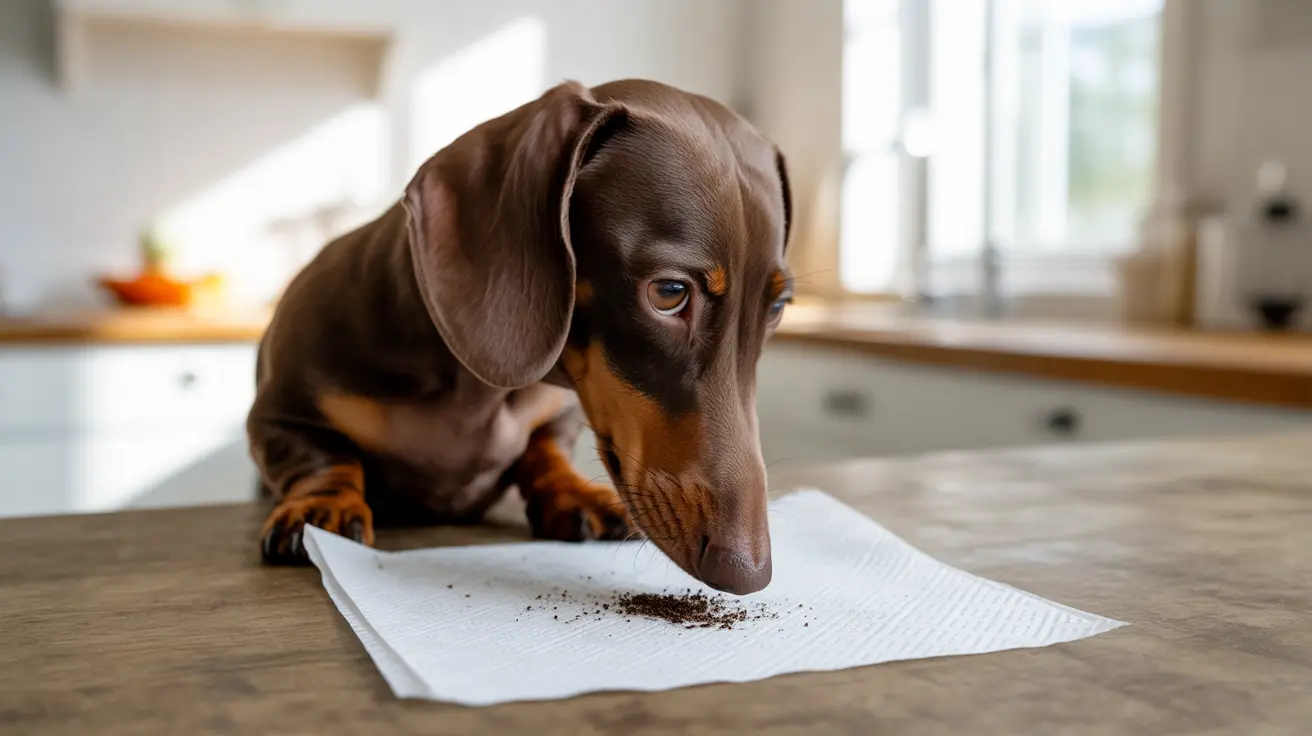Flea infestations represent one of the most challenging parasitic problems pet owners face today. These persistent blood-feeding insects not only cause significant discomfort to our beloved pets but can also pose serious health risks to both animals and humans. Understanding how to identify, treat, and prevent flea infestations is crucial for maintaining a healthy home environment and ensuring our pets' well-being.
The complexity of dealing with fleas lies in their remarkably efficient life cycle and their ability to quickly establish themselves in our homes. From the initial signs of infestation to the implementation of effective treatment strategies, pet owners need a comprehensive approach that addresses both immediate concerns and long-term prevention.
This guide will explore everything from identifying flea dirt to implementing successful treatment protocols, ensuring you have the knowledge needed to protect your pets and home from these persistent parasites.
Understanding Flea Infestation Signs and Risks
A flea infestation often begins subtly but can quickly escalate into a significant problem. The most common indicator is excessive scratching and biting behavior in pets, accompanied by visible skin irritation. In severe cases, particularly in young or vulnerable animals, flea infestations can lead to anemia due to blood loss and severe allergic reactions. Recognizing these symptoms early helps prevent complications and spread.
Common Flea Infestation Areas
Fleas tend to congregate and hide in specific regions of a pet's body, often choosing warm, protected spots that provide easy access to blood meals. Paying close attention to these common areas during regular inspections increases chances of early detection:
- Base of the tail
- Back of the neck
- Groin and belly region
- Around the ears
- Inner thighs
By carefully inspecting these areas, pet owners can catch infestations before they become severe, helping ensure prompt and effective treatment.
Identifying Flea Dirt: Your First Detection Tool
Flea dirt identification serves as a crucial early warning system for pet owners. These small, black or dark brown specks are actually flea excrement composed of digested blood. When placed on a damp white paper towel, these specks dissolve into reddish-brown stains, confirming an active infestation. Regularly combing pets and inspecting for flea dirt, especially in high-risk areas, is one of the simplest ways to diagnose a flea problem before it escalates.
Effective Flea Treatments and Control Methods
Professional Treatment Options
Professional flea removal services offer comprehensive solutions for severe infestations that are difficult to manage alone. Qualified pest control experts perform thorough property inspections to identify the extent of the problem. Following this, they apply targeted treatments using effective and safe insecticides or other methods designed specifically for flea elimination. Additionally, they provide follow-up monitoring to ensure the infestation does not return and recommend preventive measures to minimize the risk of reinfestation. Opting for professional help is particularly beneficial in multi-pet households or when infestations persist despite home treatment efforts.
Home-Based Solutions
Many flea problems can be addressed effectively with home-based treatments using veterinarian-approved products. Pet owners can apply:
- Topical medications: These are applied directly to your pet's skin, usually at the base of the neck, and provide protective effects for weeks at a time.
- Oral flea preventatives: Chewable or tablet medications that work internally to disrupt the flea life cycle and kill adult fleas.
- Flea collars: Special collars infused with insecticides protect pets by repelling and killing fleas over several months.
- Medicated shampoos: Bathing pets with special shampoos kills existing fleas on contact and soothes irritated skin.
It is important to read product labels carefully and follow dosage instructions, and to consult with a veterinarian regarding age-appropriate and species-specific recommendations.
Natural Flea Control Alternatives
For pet owners seeking natural or holistic alternatives, several methods can help keep flea populations in check without the use of synthetic chemicals. These include:
- Diatomaceous earth application: Food-grade diatomaceous earth can be safely dusted in pet bedding and carpets, killing fleas by dehydrating them. Care must be taken to avoid inhalation by humans and animals.
- Essential oil treatments (with veterinary approval): Certain oils like lavender or cedarwood may repel fleas, but should only be used under veterinary guidance, as some can be toxic to pets.
- Regular grooming with flea combs: Routine combing physically removes fleas and their eggs, helping to control populations and monitor for activity.
- Environmental management techniques: Keeping the home clean, reducing clutter, and maintaining low humidity levels can make the environment less hospitable to fleas.
While natural methods can be effective for mild infestations or as supplementary prevention, severe cases typically require conventional treatment.
Home Flea Sanitation Protocols
Eradicating fleas requires more than just treating pets; the home environment must also be addressed to break the flea life cycle. Effective sanitation involves:
- Daily vacuum all floors and furniture: Regular vacuuming removes adult fleas, eggs, and larvae from carpets, hardwood, and upholstery.
- Wash pet bedding in hot water weekly: Heat effectively kills fleas at all life stages; bed linens should be laundered frequently.
- Steam clean carpets and upholstery: Steam provides deep cleaning that kills hidden fleas and their developing stages in fabric fibers.
- Treat outdoor areas where pets frequent: Yards, patios, and shaded areas should be treated with pet-safe sprays or granules to minimize external flea habitats.
Persistence in home cleaning is essential for lasting flea control, as each female flea can lay numerous eggs, spreading infestation rapidly if left unchecked.
Flea Prevention Strategies
Prevention is always more effective than treatment. By adopting a proactive approach, pet owners can dramatically reduce the risk of flea infestations. Some key strategies include:
- Regular use of preventive medications: Administering veterinarian-recommended flea preventatives year-round keeps pets protected even during off-peak seasons.
- Monthly pet inspection routines: Examining pets for signs of fleas, bites, or flea dirt each month helps catch problems before they escalate.
- Environmental maintenance: Keeping the home clutter-free and routinely cleaning pet areas diminishes the chance for fleas to thrive.
- Professional yard treatments: For high-risk properties, recurring professional yard sprays or granules help curtail outdoor flea populations.
Combining these strategies can make a substantial difference in keeping your pet and home flea-free.
Frequently Asked Questions
- What are the most common signs of a flea infestation?
- Fleas are visible to the naked eye, but their waste (flea dirt) is often seen as tiny dark specks on pet fur. Pets may also scratch, bite, or exhibit red, irritated skin.
- How do I identify flea bites on my pet?
- Flea bites typically appear as small, red, itchy welts, often clustered together, particularly in areas where flea activity is highest.
- What are the most effective flea treatments for pets?
- Common treatments include topical medications that kill adult fleas, oral tablets that interrupt the flea life cycle, and flea collars that provide several months of protection.
- Can I use natural methods to control fleas?
- Yes, natural methods—such as using food-grade diatomaceous earth or vet-approved essential oils—can help reduce infestations, especially when combined with environmental controls and regular grooming.
- How do I prevent flea infestations in my home?
- Regular vacuuming, weekly washing of pet bedding in hot water, and consistent use of flea preventative products on pets are the most effective ways to prevent reinfestation.
- Are fleas a health risk to humans?
- While human infestations are uncommon, fleas can transmit diseases such as typhus and can cause itching or allergic reactions in sensitive individuals.
- Can fleas be completely eliminated from a home?
- Complete elimination is possible with diligent cleaning, proper treatment of pets and the environment, and consistent preventive measures. However, it's important to continue regular maintenance to prevent re-infestation.
Successful flea control requires dedication, consistency, and a multi-faceted approach. By combining appropriate treatment methods with thorough home sanitation and preventive measures, you can effectively protect your pets and home from flea infestations. Remember to consult with your veterinarian for personalized advice and treatment recommendations based on your pet's specific needs and circumstances.






